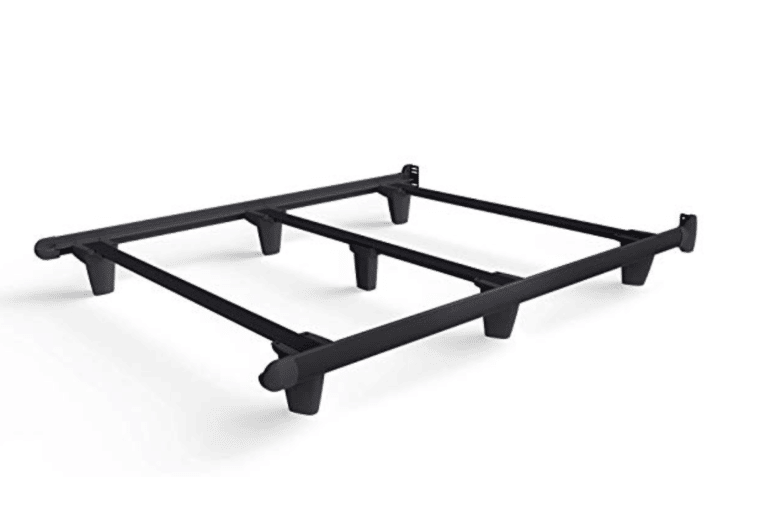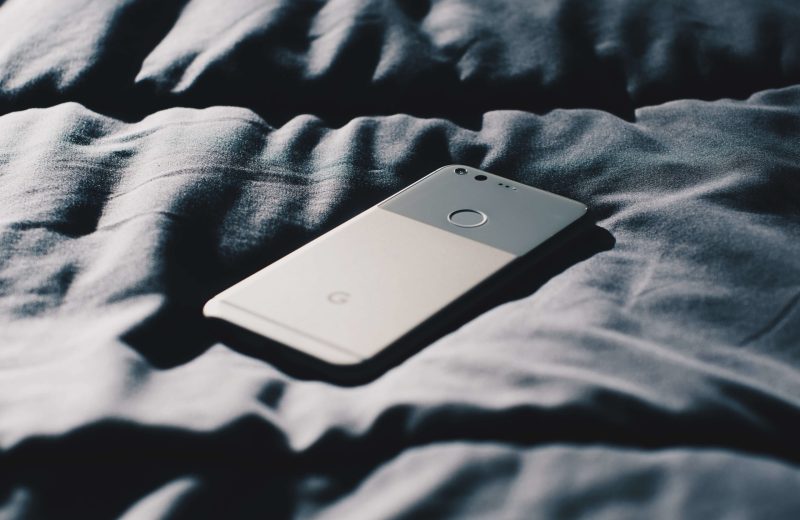
Staying connected, especially with friends, family, and loved ones is a big priority in today’s digital world. The universe is “at your fingertips” by surfing the internet, apps, and video-sharing sites. You can easily connect across the globe with the tap of a finger.
Devices can open doors to new or even once-in-a-lifetime experiences. There are downsides, though. Digital connectivity and usage are at peak levels, influencing anxiety and depression more than any other generation.
Recent research found that in American residences there are, on average, up to five devices. In fact, roughly 18% of homes report 10 or more devices, many with built-in virtual assistants like Amazon’s “Alexa.” These are often called “smart homes” and are considered “hyper-connected” households.
There are many benefits of technology, but unplugging during your bedtime ritual will largely affect daily life, sleep habits, and overall wellness.
Considering the number of devices filling our homes, it is hardly a surprise that about 70 million Americans suffer from chronic sleep disorders. Conditions like insomnia, restless leg syndrome, and sleep apnea can cause sleep deprivation, pain, and longer-term health issues.
Interactive devices, like cell phones, tablets, and video games, produce many distractions with lights, sounds, or vibrations. This will cause significant challenges to falling and staying asleep. According to the sleep foundation, about 95% of people regularly use technology within an hour of bedtime, exposing them to high-energy blue light waves.
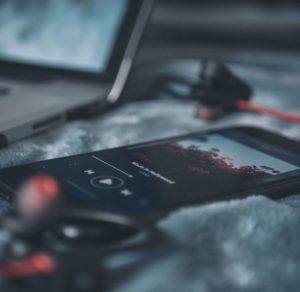
Radiation and blue lights at night, through moderate device usage, will negatively affect melatonin production and hinder your ability to fall asleep. It also affects how long you can stay asleep and the overall sleep quality. Melatonin is considered a valuable sleep hormone typically released naturally by your body at bedtime. This “feel-good hormone” makes us sleepy and helps us sustain a restorative sleep process. It also supports a natural circadian rhythm. If you experience weakened melatonin release because of your devices, you may feel wide awake at bedtime, even if you are tired. Lack of sleep, or a disrupted or nonexistent sleep routine, can easily lead to other long-term disadvantages to your physical and mental health.
A lack of sleep can have consequences that are not always completely understood or considered. Research conducted by the CDC has shown an increased risk of chronic health issues like heart disease, type 2 diabetes, obesity, and depression are linked to insufficient sleep patterns among adults.
If you have overlooked sleep quality, it is time to consider a renewed sleep ritual to support your long-term health. After all, sleep naturally rejuvenates our bodies by dispersing “natural pain killer” endorphins, “feel good” hormones, and beneficial nutrients to heal us. Without the ability to sleep, humans would simply not have a chance to survive or thrive. Sleep is the ultimate healer of your mind and body, and we all need sleep to wake up refreshed and ready to live another day.
Not all technology is bad technology when it comes to your health and sleeping well. Many products, like customized hybrid pillows, temperature-regulating blankets, and high-performance sheets, offer a simple way to help you sleep better. Unique tools called Phase Change Material (PCM) used in many temperature-balancing bedding accessories will ensure you won’t wake up feeling too hot or too cold. PCM technology in the form of a fabric, like a blanket or a pillow, will store, absorb, and release body heat as necessary. Balancing your body temperature throughout the night is what this technology does best. Keeping you warmer in the winter and cooler in the summer, this tech is definitely a “sleep-saver.”
Sleep trackers have gained popularity amongst those seeking to sleep more soundly, as they offer an effective way to get to the bottom of your sleep disruptors. Sleep-tracking devices create little or no distraction before bedtime. They will compile personal data to produce a “sleep score” and help scientifically identify what may be causing your sleeping problems. Disrupted breathing, snoring, and pressure points can be issues that cause you to wake up several times throughout the night. Awareness can be half the battle to improve what has been causing your sleep deprivation.
More impressive and complex sleep trackers will gather data like your heart and respiration rates using sensors. Heart rate will vary depending on various sleep stages, so it is an applicable parameter for sleep trackers to follow to determine sleep quality. Heart rate patterns will help define your overall sleep quality. Many sleep tracker devices can also determine pressure points for comfort, breathing patterns, and the time spent in light, deep, and REM sleep stages.
Sleep trackers with built-in sensors and microphones will provide the most in-depth data, so make sure to check out the Tempur-pedic Sleep Tracker on the Ergo Extend Smart Base.
The Tempur-Pedic Sleep Tracker will provide detailed data on each sleep stage by tracking your movement, heart rate, and breathing patterns. It also monitors environmental factors like noise, humidity, and temperature.
This device will provide you with an extensive overview of your overall sleep quality rating first thing in the morning. Automatic snore response, goals, and sleep coaching are bonuses with this fully loaded-sleep tracker. The best sleep improvement devices, like this, will observe your specific respiration patterns, the most influential parameter to effectively tracking sleep. Recognizing respiration trends can indicate issues like snoring or sleep apnea to form a more comprehensive sleep analysis.
Sleep improvement resources have gained much popularity in recent years, likely due to the rise of people experiencing deprivation from disrupted sleep patterns. If sleep-tracking technology doesn’t seem right for you, there are other methods to help you relax before bedtime and sleep better.
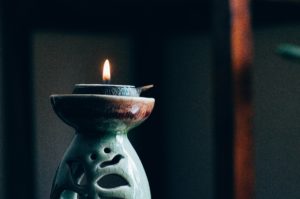
Try starting a nightly tradition to relax and look forward to going to bed. Start at least an hour before bed. A heating pad or soothing bath added to the routine will help reduce stress and melt away tension. Calm your mind and reduce muscle tension with a warm heating blanket or heated massage chair that will soothe aches and pains. Using heat as a therapy to unwind is an uncomplicated way to help you fall asleep faster, stay asleep longer and relax before bedtime.
Meditation, stretching, deep breathing, heat, and massage can all help reinforce a healthy sleep routine.
Other smart bedtime habits to help you feel more sleepy or stay asleep without distraction:
If putting your phone away isn’t an option:
Now is the time to establish good habits with technology like a sleep tracker, aromatherapy diffuser, or even a new massage chair. Mattress World Northwest showrooms, as well as the online shop, offer a variety of sleep technologies, from simple to complex. Bedding and sleep accessories are available to enhance your comfort and revive your body and mind through the best sleep possible. Specialists at Mattress World Northwest will happily answer any questions about technology and sleep, or about creating your ideal bedtime routine.
Rest assured, you can look forward to comfortably deep sleep after you discover the role that technology plays in your life. Enjoyable bedtime habits followed with a cozy pillow, blanket, and mattress that fits you comfortably will bring you rewarding and satisfying sleep for years to come.
« Where to Buy a Massage Chair: Online or In-Store? | Is Napping Good for You? »
While you can't go wrong with any of our mattresses, here are a few factors you'll want to consider before making a purchase: your sleep position (and if you have a partner, theirs as well), the size of the space, and a price point. If you have any questions, rest easy knowing that our team is happy to help you find that perfect fit.
| Size | Dimensions |
|---|---|
| Twin | 38″ wide x 75″ long x 9.25″ tall |
| Twin XL | 38″ wide x 80″ long x 9.25″ tall |
| Full | 54″ wide x 75″ long x 9.25″ tall |
| Queen | 60″ wide x 80″ long x 9.25″ tall |
| King | 76″ wide x 80″ long x 9.25″ tall |
| Cal King | 72″ wide x 84″ long x 9.25″ tall |
| Split King (2pk) | 38″ wide x 80″ long x 9.25″ tall |
Mattress World Northwest makes it easy to choose the right foundation for your space and lifestyle.
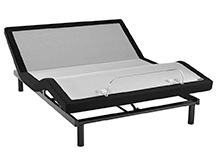

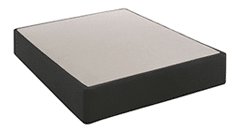
Reliable support for your boxspring and mattress.
